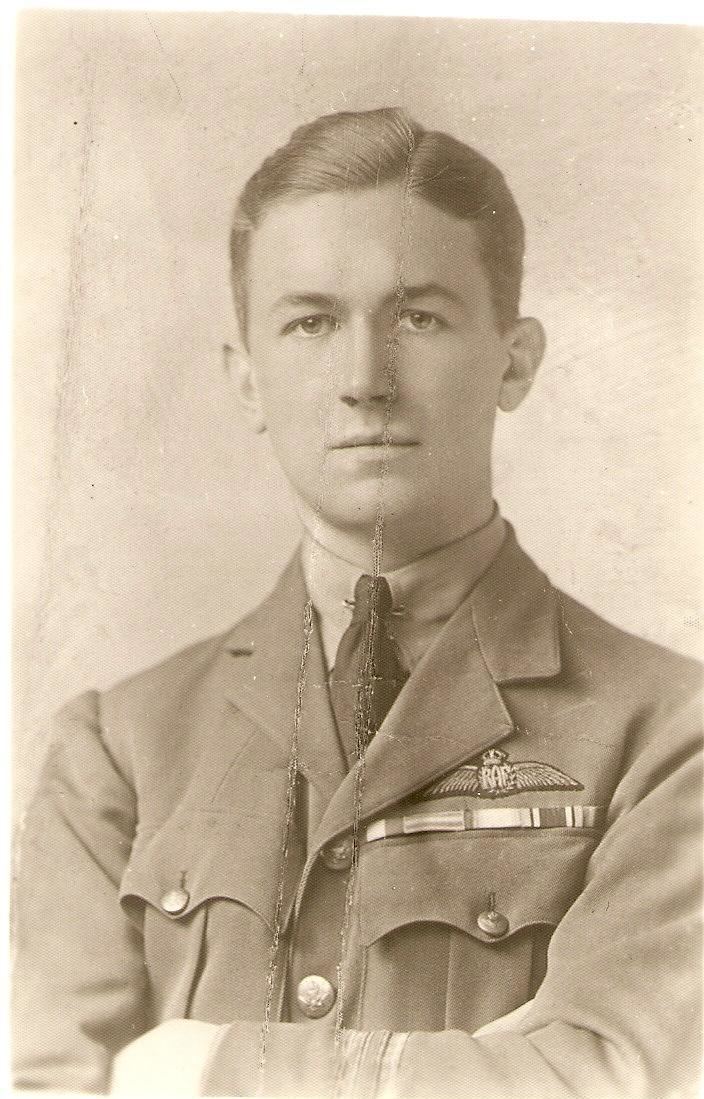Nickname(s) Jim Battles/wars World War I Allegiance United Kingdom Name James Enstone | Years of service 1916–1919 Battles and wars World War I Rank Captain Unit No. 204 Squadron RAF | |
 | ||
Born 29 August 1895Birmingham, England ( 1895-08-29 ) Died October 4, 1963, Hemel Hempstead, United Kingdom Place of burial Hemel Hempstead, United Kingdom Service/branch Royal Navy, Royal Air Force | ||
Captain Albert James Enstone (29 August 1895 – 4 October 1963) was a British World War I flying ace. Various sources credit him with differing air victory scores. In one text, he is credited with 13 confirmed aerial victories and driving down 11 other German aircraft, including three Gotha bombers. Another source claims 15 confirmed aerial victories; ten (including one shared win) were destroyed, and five (including one shared win) were driven down out of control. He is known to have attacked two Gotha bombers. Regardless of his actual victory totals, records show that Enstone served his country valiantly.
Contents
Early life
Albert James Enstone was the second son of Thomas and Flora Enstone of Edgbaston, Birmingham, England.
World War I service
Enstone joined the Royal Naval Air Service on 3 April 1916 with the rank of temporary probationary flight sub-lieutenant. He gave a permanent home address in Birmingham, and his next of kin as his mother, Mrs. J. E. Enstone. He learned to fly at Cranwell; He seems to have showed early promise, as he was appointed as an acting flight commander during training. He graduated on 15 September 1916 with Royal Aero Club certificate 3677. Enstone was confirmed in his rank as flight sub-lieutenant on 8 November 1916; he had already been appointed an acting flight lieutenant as early as 10 April 1916.
He was one of the founding members of 4 Naval Squadron in April 1917; it was stationed at Bray Dunes on the Franco-Belgian border, and was tasked with both flying offensive patrols and escorting RNAS bombing missions. He used a Sopwith Pup to counter German probes over the English Channel. Enstone destroyed four enemy aircraft near or over the English Channel between 9 May and 5 June 1917, including one kill shared with Arnold Jacques Chadwick. His second victory, scored on 9 May, forecast his later citation for valour; Naval 4 battled a large opposing force of German Albatroses for 25 minutes, with Alexander MacDonald Shook and Langley Frank Willard Smith joining Enstone in victory.
After he and his squadron upgraded to Sopwith Camels, Enstone used his new mount to down three more German aircraft in July 1917, including an effort against a seaplane teamed with Chadwick and Ronald M. Keirstead. The new ace would go on to push his victory total to 10 for 1917. Between his ninth and tenth wins, on 1 October 1917, Enstone was promoted from temporary flight sub-lieutenant to temporary flight lieutenant. He also won the Distinguished Service Cross during this string of victories.
Enstone continued to win throughout the first half of 1918. When the RNAS was consolidated into the Royal Air Force on 1 April 1918, his position as flight commander automatically gained him the rank of captain. In August 1918, he was relieved of combat duty and returned to Home Establishment in England. He was awarded the Distinguished Flying Cross during this period.
Post World War I
On 17 February 1919, Enstone was relieved of active duty and transferred to the unemployed list. Albert James Enstone married Elsie Grace Lilienfield on 16 March 1920 at Saint Mary's, Bryanston Square, London.
He went into business with an in-law. On 18 March 1924, Enstone dissolved a partnership with Clarence Walter Lynfield (formerly Lilienfield) as a general merchant in London, Birmingham, and Dublin.
On 27 November 1928, the firm of Enstone and Lilienfield posted notice that their joint stock company would dissolve within the next three months. On 26 April 1929, the firm was dissolved.
As was common for the RAF veterans of World War I, Enstone may have retained an appointment in the RAF Reserves, as there is discussion of his retention of rank during 1930.
Enstone also developed a career as an artist post-war. In fact, his death certificate records his occupation as "artist". He died at Field Cottage in Hemel, Hampstead on 4 October 1963, of carcinoma of the tonsils.
Honours and awards
List of victories
Accounts of victories scored by Albert James Enstone differ widely from source to source. The table below is an attempt to collate his victories. Numbered victories are those that were confirmed by the Royal Naval Air Service or its successor Royal Air Force. Unconfirmed victories are denoted by the notation "u/c". If you are uncertain about how to list a claim, Aerial victory standards of World War I can be instructive. Please supply source(s) of information for entries. Present list is based on Shores et al. (1990), p. 150, with additional sources noted for specific instances.
